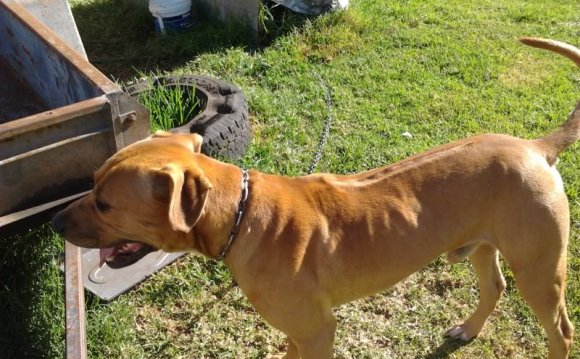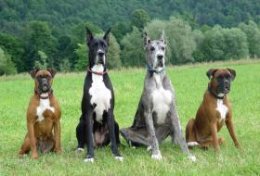
 How long do dogs live? That's what many dog lovers want to know. It's a basic question that affects all pet owners, new and old, and the answer is one that differs greatly among breeds. Most experts agree that smaller breeds typically have a longer lifespan than large breeds of dog, but as with everything in life, there are exceptions to every rule.
How long do dogs live? That's what many dog lovers want to know. It's a basic question that affects all pet owners, new and old, and the answer is one that differs greatly among breeds. Most experts agree that smaller breeds typically have a longer lifespan than large breeds of dog, but as with everything in life, there are exceptions to every rule.
Size is often relevant to life span.
Larger Breeds Tend to Have Shorter Lifespans
Giant or large and bulky breeds of dog typically have the shortest lifespan. These breeds include:
- English Mastiff
- Bernese Mountain Dog
- Bullmastiff
- Greater Swiss Mountain Dog
- Leonberger
- Bloodhound
- Newfoundland
- Rottweiler
- St. Bernard
- Dogue de Bordeaux, aka French Mastiff
- Neopolitan Mastiff
- Cane Corso
- Scottish Deerhound
These breeds, more so than any other size dog, tend to age quickly as they progress from rambunctious, energetic pups into docile adults in a matter of about three years. After the third year, they can start showing signs of fatigue, bone disease, a weakened heart and, in some cases, cancer. Many of the large breed dogs have a life expectancy of about six to ten years.
The breeds most commonly associated with the shortest lifespans include Irish Wolfhounds, Great Danes, Bernese Mountain Dogs, Bloodhounds and Bullmastiffs. These breeds are considered elderly by age six, and it's somewhat rare for them to live beyond eight years.
Small Breeds Tend to Live Longer
Small to medium size dogs, both pure-breeds and mixed, have a life expectancy of 10 to 13 years in most cases, although many will live to 16 or beyond if their owners take good care of them. Generally speaking, Toy breeds and Terrier breeds often live well into their teens if they are fed a proper diet and receive regular, routine veterinary care.
Genetic Predisposition
Certain breeds of dog are susceptible to hereditary diseases and health conditions which can impact their health and, ultimately, their lifespan. For example, Great Danes, Standard Poodles, German Shepherds and Akitas are at higher risk for dying early from bloat. Chinese Shar-Peis are prone to developing amyloidosis, and Cavaliers and Doberman Pinschers are often victims of early-onset heart disease.
Genetic diseases such as these affect many pure-bred dogs, which is why a cross-bred dog or "mutt" may enjoy a longer lifespan than a pure-bred dog. That said, owners can help improve a pure-bred dog's chances of living beyond its expectancy if they learn about the health risks associated with the breed and adjust their lifestyle to suit the dog's needs. For example, it's wiser to avoid strenuous activity with breeds that are prone to hip dysplasia. Although x-raying the joints wil show how well an individual dog's ball and sockets are formed, avoiding needless stress may prevent arthritis from setting in. Light exercise should be enough to keep such breeds healthy.
Housing
Another factor that can affect the lifespan of a dog is how it is cared for. Dogs that are kept outside all year long may possibly have a shorter lifespan than dogs that are kept inside the house. The constant stress of exposure to the elements, regardless of the type of shelter provided, can wear a dog down long before its time. Outside dogs are also at risk of developing diseases or health maladies that may go undetected by their owners since they're not in as close contact with them as they would be with an indoor dog. Outside dogs are also in a prime location to suffer from flea and tick infestations which can take a tremendous toll on a dog's health.
Insufficient food and water also affect a dog in cases where forgetful owners become neglectful, and this is regardless whether a dog is kept inside or outside.
Maximizing the Lifespan of Your Dog
An emotional connection with its owner is a vital ingredient in every dog's lifespan. Dogs have a need to bond with their owners. If they don't receive the emotional connection they crave, their health can suffer.
Of course, feeding your dog high quality food, giving it plenty of fresh water to drink, providing regular veterinarian visits and maintaining its hygiene are all essential to giving your dog the life it deserves. If you can provide these basic requirements, they will go a long way toward maximizing your dog's lifespan.
YOU MIGHT ALSO LIKE












